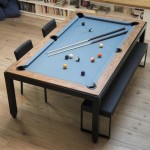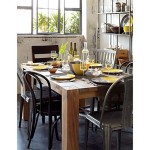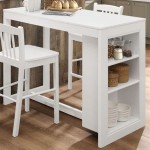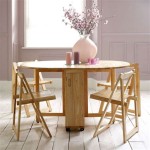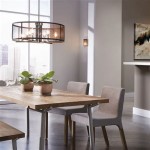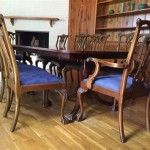The Enduring Appeal of Solid Wood Oak Dining Tables
Solid wood oak dining tables represent a significant investment in both functionality and aesthetics for any home. Their inherent strength, natural beauty, and timeless appeal make them a favored choice for homeowners seeking durable and stylish furniture. Understanding the characteristics of oak, the construction techniques employed in crafting these tables, and the considerations involved in their care and maintenance is essential for making an informed purchasing decision.
Oak, a hardwood derived from the oak tree, is renowned for its density, strength, and distinctive grain patterns. These qualities contribute to the longevity and visual appeal of oak furniture. The two primary types of oak used in furniture making are red oak and white oak, each possessing slightly different characteristics. Red oak is generally more porous and features a reddish hue, while white oak is denser, more water-resistant, and has a lighter, more golden tone. The choice between red oak and white oak often depends on personal preference and the desired aesthetic of the dining room.
Beyond its inherent properties, the appeal of solid wood oak lies in its ability to be crafted into a diverse range of styles, from rustic farmhouse designs to sleek modern interpretations. This versatility makes oak tables suitable for a wide variety of interior design schemes. Furthermore, the natural variations in the wood grain ensure that each table is unique, adding character and individuality to the dining space.
Durability and Longevity
One of the primary advantages of solid wood oak dining tables is their exceptional durability. Oak's inherent density and strength make it resistant to scratches, dents, and other forms of wear and tear that commonly affect furniture made from less durable materials. This resilience translates into a long lifespan, ensuring that the table can withstand the demands of daily use for many years, even decades, with proper care.
The inherent stability of solid wood also contributes to the table's structural integrity. Unlike composite materials or veneers, solid wood expands and contracts minimally with changes in humidity, reducing the risk of warping, cracking, or joint failure. This stability is crucial for maintaining the table's level surface and overall structural soundness over time.
The durability of an oak table is also influenced by the quality of construction. Tables crafted with traditional joinery techniques, such as mortise and tenon joints, dovetail joints, and traditional wood screws can add strength and stability. These techniques, while often more labor-intensive, provide a superior level of structural integrity compared to tables assembled with simpler methods like nails or staples.
The finish applied to the oak table also plays a role in its durability. A high-quality finish protects the wood from moisture, stains, and UV damage, further extending its lifespan. Finishes such as varnish, lacquer, and polyurethane are commonly used to provide a durable and protective coating. The type of finish and the number of coats applied will affect the level of protection and the overall appearance of the table.
Aesthetic Versatility and Design Options
Solid wood oak dining tables offer a wide range of aesthetic possibilities, making them adaptable to various design styles. From rustic and traditional to contemporary and minimalist, oak can be manipulated and finished to achieve diverse looks. The natural grain patterns of oak, whether pronounced or subtle, add character and visual interest to any dining room.
Oak is also amenable to a variety of stains and finishes, allowing homeowners to customize the table's color and tone to complement their existing décor. Lighter stains can enhance the wood's natural warmth, while darker stains can create a more formal and sophisticated look. Painted finishes, while concealing the wood grain, can also be used to achieve a specific aesthetic, such as a farmhouse-inspired look with distressed paint.
Beyond color and finish, the shape and style of the table also contribute to its overall aesthetic. Rectangular tables are a classic choice that suits both formal and informal dining settings. Round tables promote conversation and are ideal for smaller spaces. Oval tables offer a balance between the formality of a rectangular table and the intimacy of a round table. Square tables make less common, can work well in smaller, more contemporary spaces.
The table's legs and base are also important design elements. Options range from simple, straight legs to more ornate, carved legs. Pedestal bases offer a clean and modern look, while trestle bases add a touch of rustic charm. The choice of legs and base should complement the overall style of the table and the room.
Furthermore, solid wood oak is easily paired with various chair styles, from upholstered chairs for a more formal feel to wooden chairs for a more casual setting. The versatility of oak allows for seamless integration into any dining room design scheme.
Care and Maintenance
Proper care and maintenance are essential for preserving the beauty and longevity of a solid wood oak dining table. While oak is a durable material, it is still susceptible to damage from moisture, heat, and abrasive cleaners. Implementing a few simple practices can help keep the table looking its best for many years.
Protecting the table from spills and stains is crucial. Immediately wipe up any spills with a clean, damp cloth. Avoid using harsh chemicals or abrasive cleaners, as these can damage the finish. For stubborn stains, a mild soap and water solution can be used, followed by a thorough drying.
Using coasters and placemats is recommended to protect the table from heat and moisture damage. Hot dishes and beverages can leave permanent rings or marks on the finish. Placemats not only protect the table but also add a decorative touch to the dining setting.
Regular dusting helps prevent the build-up of dirt and grime, which can dull the finish over time. Use a soft, lint-free cloth to dust the table regularly. Avoid using furniture polishes that contain silicone, as these can create a build-up that is difficult to remove. An occasional furniture oil treatment can help nourish the wood and protect it from drying out.
Maintaining a stable humidity level in the home is also important for preserving the integrity of solid wood furniture. Extreme fluctuations in humidity can cause the wood to expand and contract, potentially leading to cracks or warping. Using a humidifier or dehumidifier can help regulate humidity levels and protect the table.
Finally, consider professional refinishing services if the table's finish becomes severely damaged or worn. Refinishing can restore the table to its original beauty and extend its lifespan. A professional refinisher will strip the old finish, repair any damage, and apply a new finish to protect the wood.
In conclusion, solid wood oak dining tables are a timeless and durable investment that can enhance the beauty and functionality of any dining room. Their inherent strength, aesthetic versatility, and enduring appeal make them a favored choice for homeowners seeking quality furniture that will last for generations. By understanding the characteristics of oak, the construction techniques employed in crafting these tables, and the necessary care and maintenance practices, one can ensure that their oak dining table remains a cherished centerpiece of their home for many years to come.

Terra 90 Natural White Oak Solid Wood Dining Table Reviews Crate Barrel

Topa Rectangular Dining Table White Oak Length 90

Dining Table Oak Wooden Solid Wood Tree Edge Rustic Etsy

Dining Table In Solid Oak Modern Mid Century Scandinavian Etsy

Mission Solid Oak Dining Table With 2 Leaves And 8 High Back Chairs In Usa 4 Side Arm Michaels Cherry Stain

5 Piece Rustic White Oak Ellena Lundar Dining Set

Oak Solid Wood Round Dining Table

Vega Ii Solid Wood White Oak Dining Table W Base Runner Made To Order Etsy

Rounded Corner Timber Dining Table

Boscobel Solid Oak Trestle Dining Table Thick Legs Etsy



